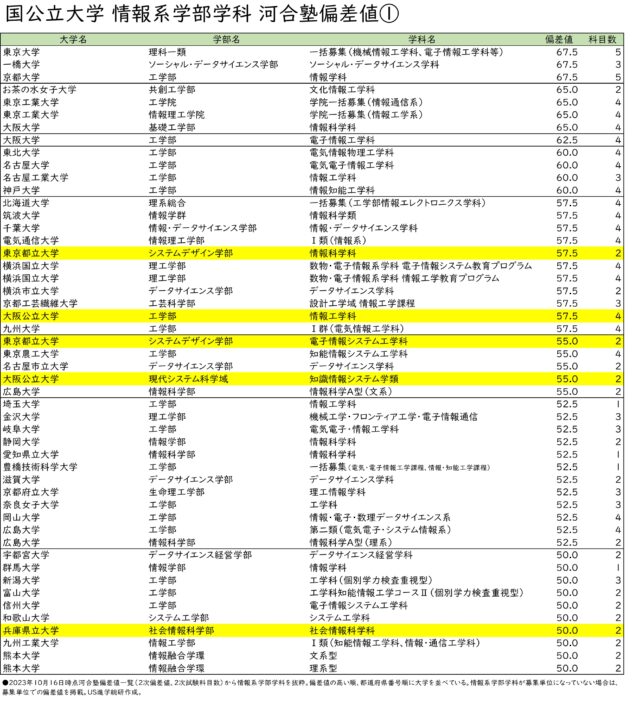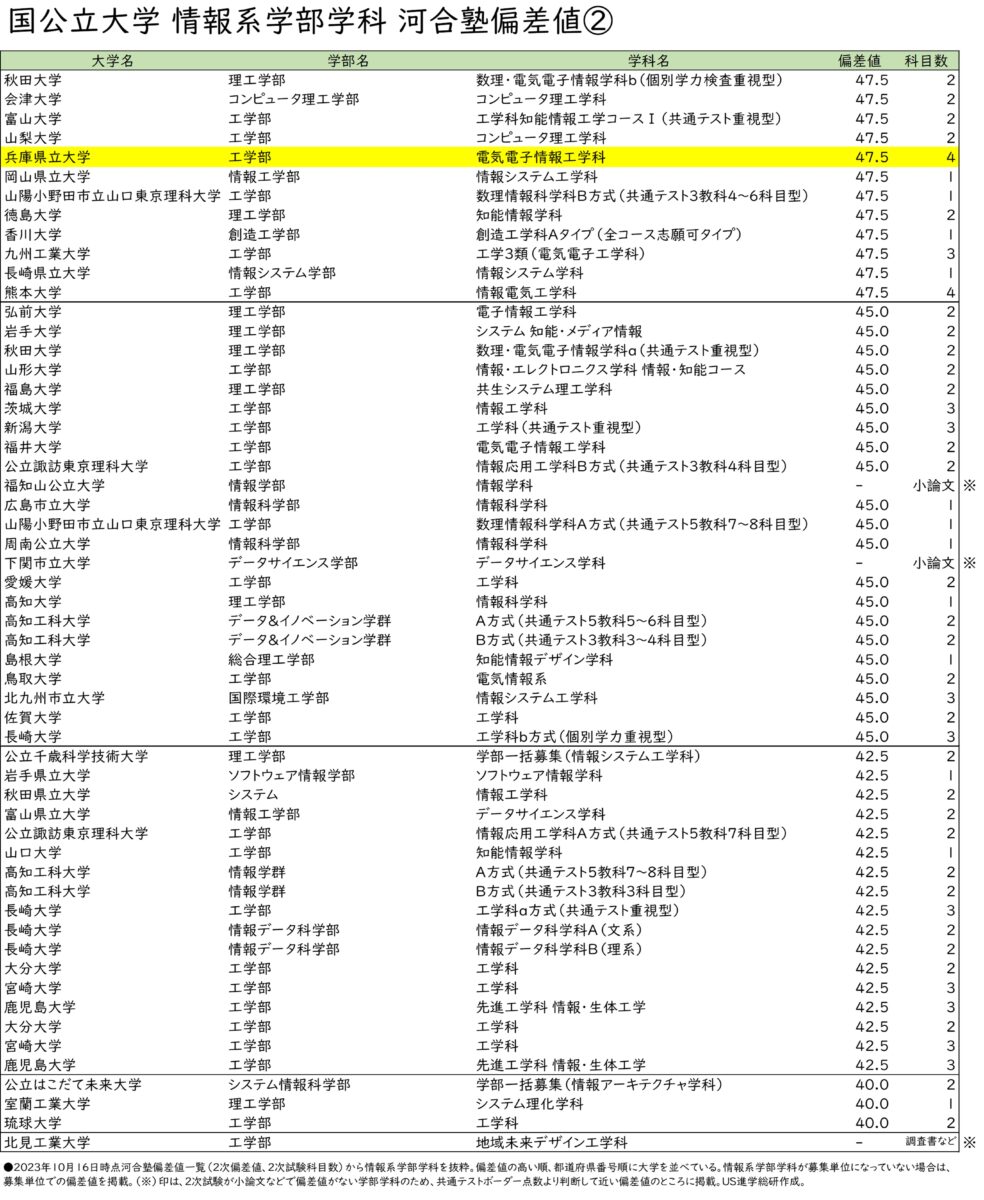There is a growing movement to make public university tuition completely free from 2024.Tokyo (Tokyo Metropolitan University) has expanded the scope of full exemption, and Osaka (Osaka Public University) and Hyogo (University of Hyogo, College of Arts, Culture, and Tourism) have removed annual income limits.Will this trend spread to surrounding prefectures?Or will there be a direction in which the government provides collective support?If you look around the world, there are some countries that offer free tuition, so this may be considered in the future, but in this case, the tuition fees of Tokyo Metropolitan University, Osaka Public University, and Hyogo Prefectural University have been made free. I would like to think about the impact on universities.
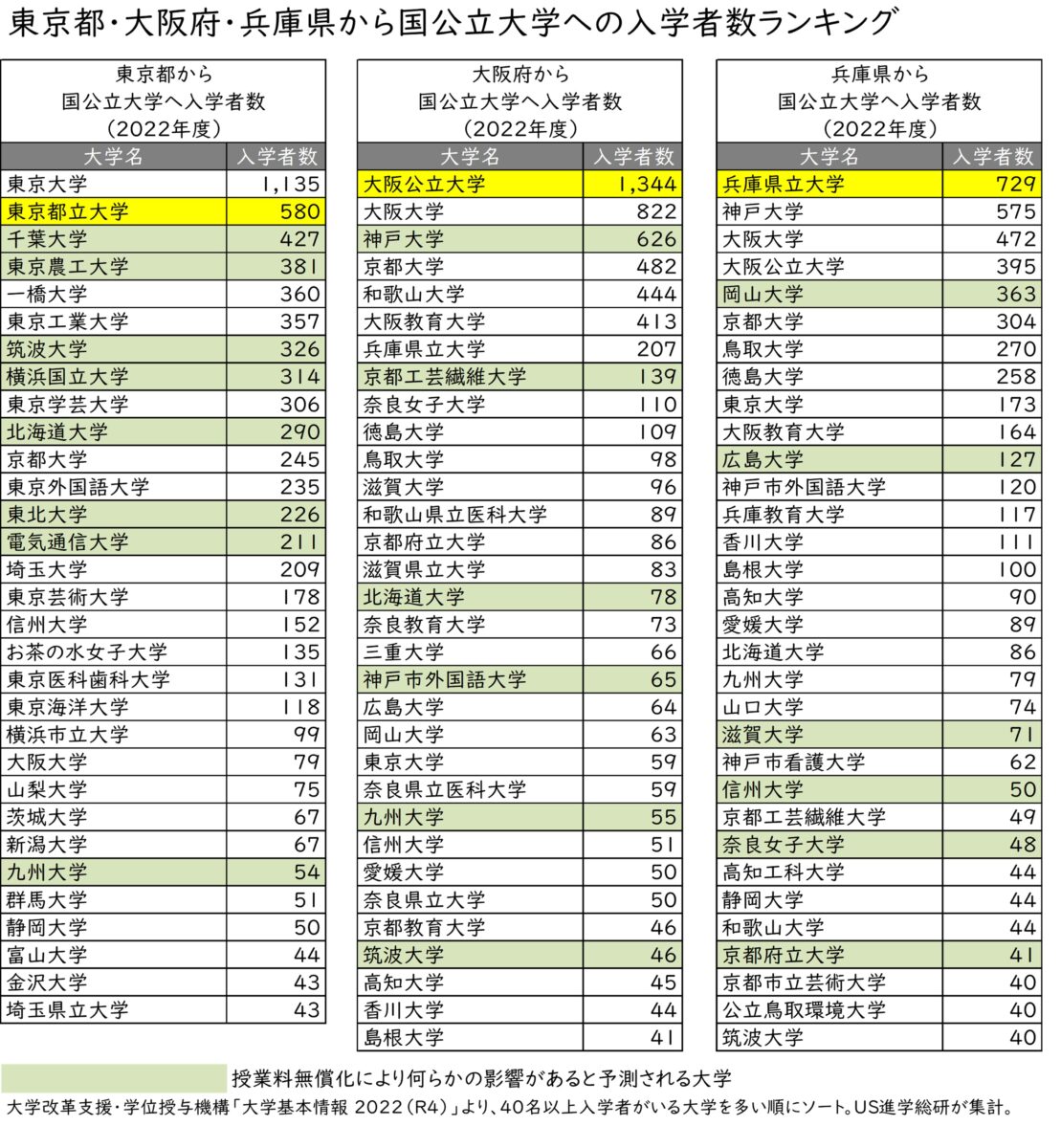
The full tuition fee exemption will begin in 2020 with annual income restrictions, and will be expanded or completely abolished from 2024.
Starting in 2020, the new higher education study support system will begin with annual income restrictions for most national, public, and private universities, and each prefecture will add its own support accordingly.The costs associated with independent support are enormous; the financial burden for making Osaka public universities completely free of charge is about 45 billion yen (at the time of system completion), and the financial burden for making Hyogo Prefectural universities completely free of charge is about 22.4 billion yen (at the time of completion of the system). This amount is not likely to be something that any prefecture can immediately cover.
Tokyo, Osaka, and Hyogo prefectures have decided to expand the scope of their own support and eliminate annual income limits from 2024, but I feel that this will have the greatest impact on students who wish to study science or law, who have a long enrollment period. This is support for those who wish to enter graduate school.In the case of science departments, the enrollment rate is high for graduate school, so students stay for six years.The same applies to those who wish to attend law school. If admission fees and tuition fees are free for six years, the degree of attention will be high even for families with high annual incomes.
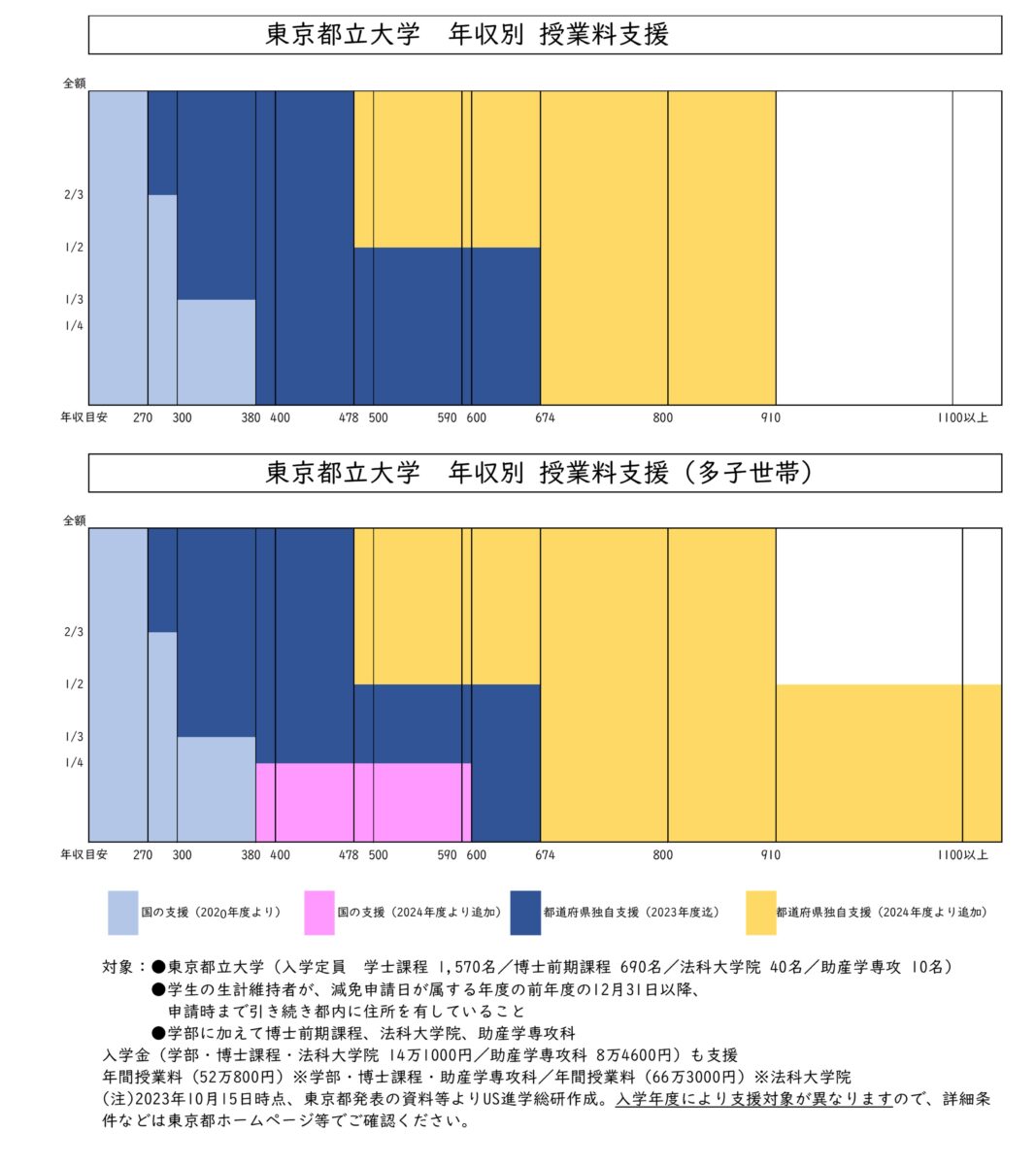
Osaka Public University supports tuition fees up to law school.The total amount of support is 4 yen, including the entrance fee, for 2 years of undergraduate school + 431 years of law school (for those who have already completed the course).Will law schools become popular?
Tokyo Metropolitan University and Osaka Public University have law schools, which are also eligible for support.The admission capacity of law schools is small, so the overall impact is small, but it is a big advantage for applicants.In particular, Osaka Public University Law School (formerly Osaka City University Law School) is likely to become popular, as the bar exam pass rate for those with a law degree is close to the national average.
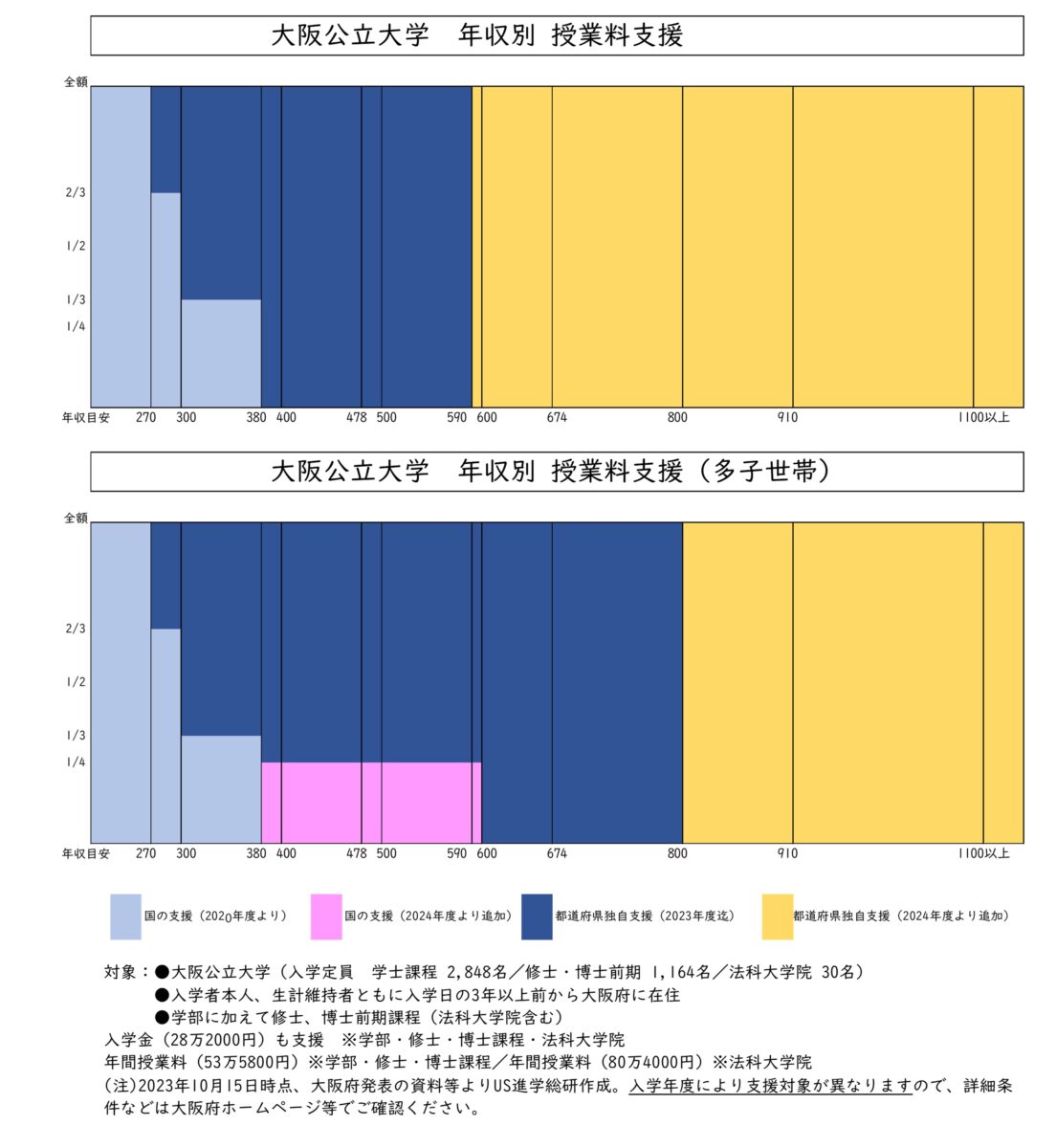
The University of Hyogo supports tuition fees up to the doctoral program.The total amount of support, including the entrance fee, is 4 yen for 5 years of undergraduate study and 538 years of doctoral course.Not only undergraduate schools but also graduate schools are likely to become popular.
Tokyo Metropolitan University and Osaka Prefectural University provide support for entrance fees and tuition fees for master's and master's programs (including law schools), while the University of Hyogo says it will provide support up to the doctoral program. If you think about it over 9 years, the amount will exceed 500 million yen.The rate of progression to graduate school is 61.1% (2022 undergraduate graduates) at the University of Hyogo Faculty of Engineering and 76.0% (2022 undergraduate graduates) at the Faculty of Science.The enrollment capacity for the second half of the doctoral program is small at 78 students, but the purpose is to develop human resources and strengthen the growth potential of Hyogo's industry, so it is slightly different from Tokyo and Osaka prefectures.Regarding admission to graduate school, it seems that an increasing number of science and engineering students attending private universities, including Tokyo Metropolitan University and Osaka Public University, are considering applying for graduate school.
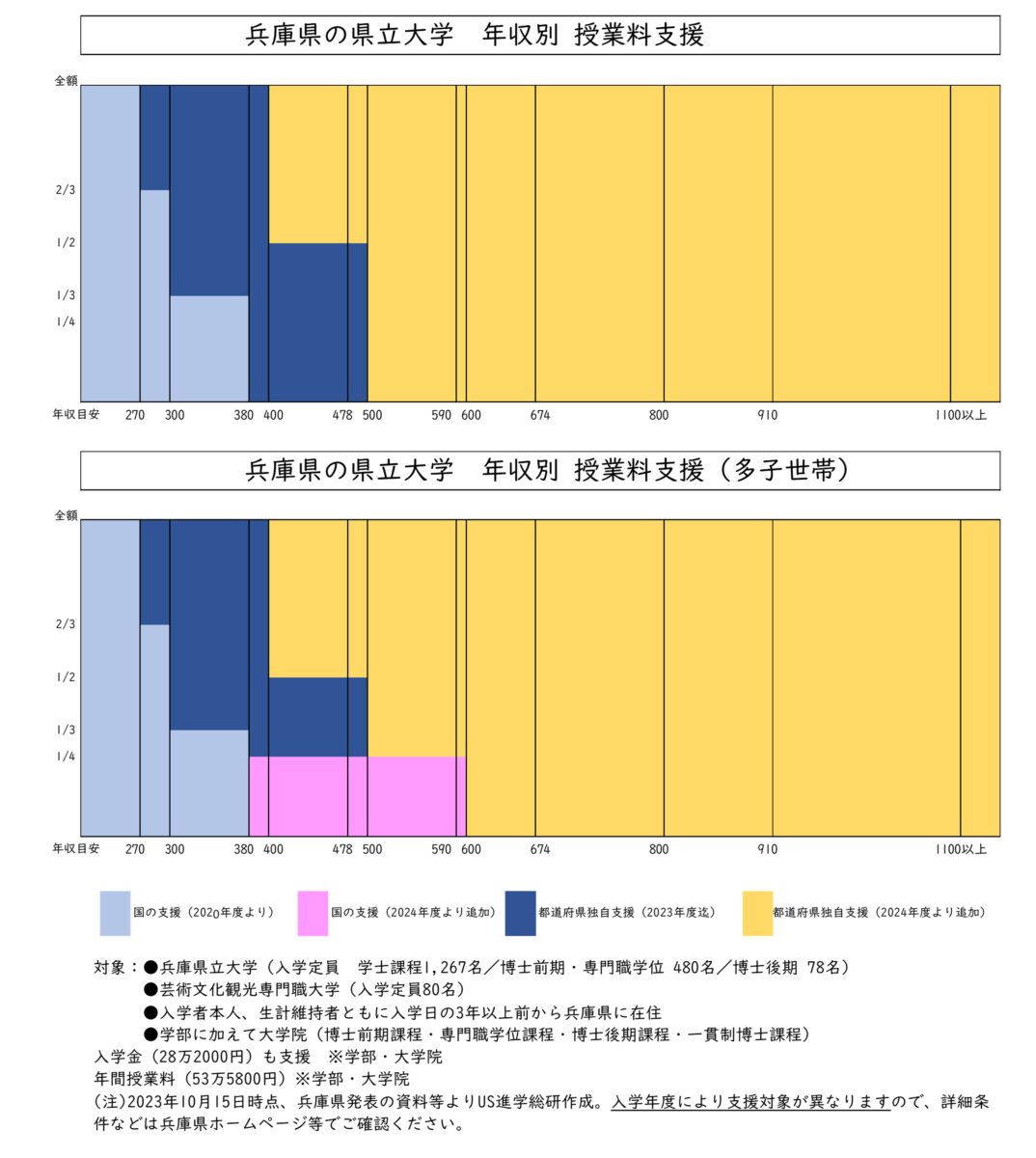
The number of applicants will increase, the local occupancy rate will increase, and the deviation value may also rise.It is thought that universities with similar rankings or slightly higher rankings will be affected.
If tuition fees are waived in addition to admission fees, I am sure that the number of local candidates who will be eligible to take the exam will increase.It is also possible that the standard deviation score will rise slightly as the number of exams for the safe class who want to pass increases.The scope of the impact is from universities with similar rankings to slightly higher rankings; at the University of Hyogo Prefecture, universities with slightly higher rankings such as Hiroshima University and Okayama University, which require students to attend outside their home, have seen a decrease in the number of students enrolling from within Hyogo Prefecture. It is predicted that it will.Regarding private universities, if more people aim to attend national and public universities due to free tuition, the number of applicants may increase, especially in the Kansai region.
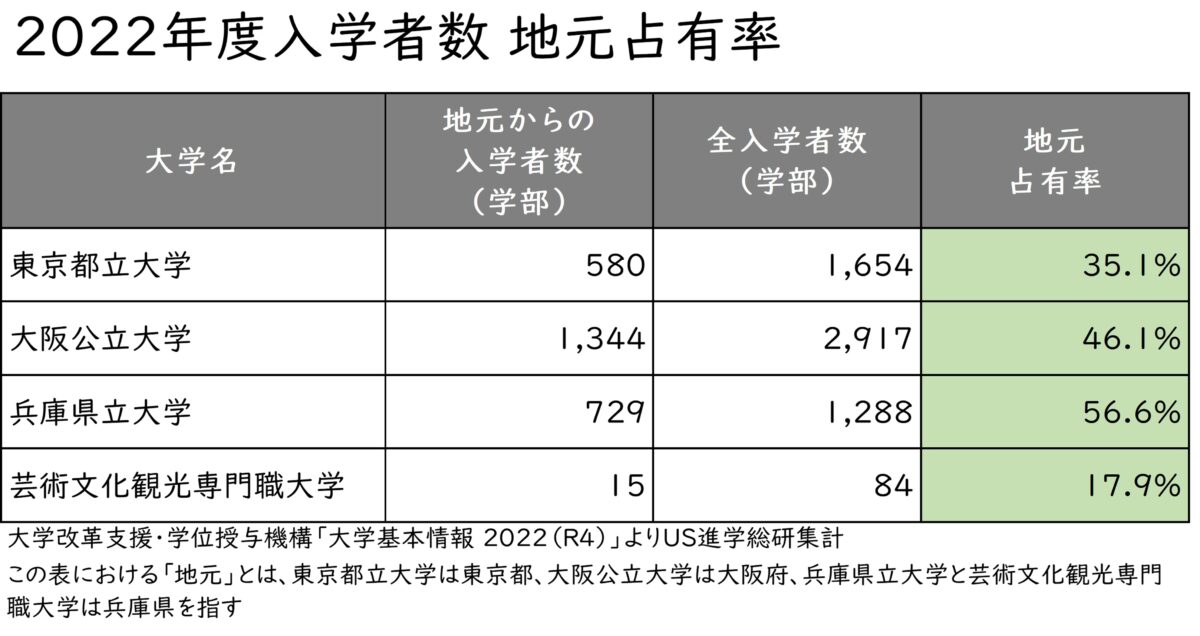
It is possible that it will spread to surrounding prefectures, but the purpose is to remain within the prefecture and revitalize local industry.
The purpose of tuition fee support is ``to prevent students from giving up on going to university because they cannot pay tuition'' and ``to reduce the burden of educational costs on families raising children.'' ``Developing human resources and strengthening the growth potential of industry'' has also been added.In particular, prefectures in rural areas still provide support for university students' U-turns and I-turns, but in order to revitalize local areas, they may consider adding tuition support to increase the percentage of students remaining within the prefecture.However, if public universities across Japan were to become free of charge, I feel that it would be less interesting for students as well.In addition, the current move to make public universities free of charge in Tokyo, Osaka, and Hyogo prefectures targets only a small number of universities and does not increase enrollment capacity, so the overall impact should be quite limited. is.However, depending on the trends in the 2024 entrance exams, there is a possibility that there will be major changes, so we will continue to pay attention to this.
(Reference) First half schedule second test deviation value
